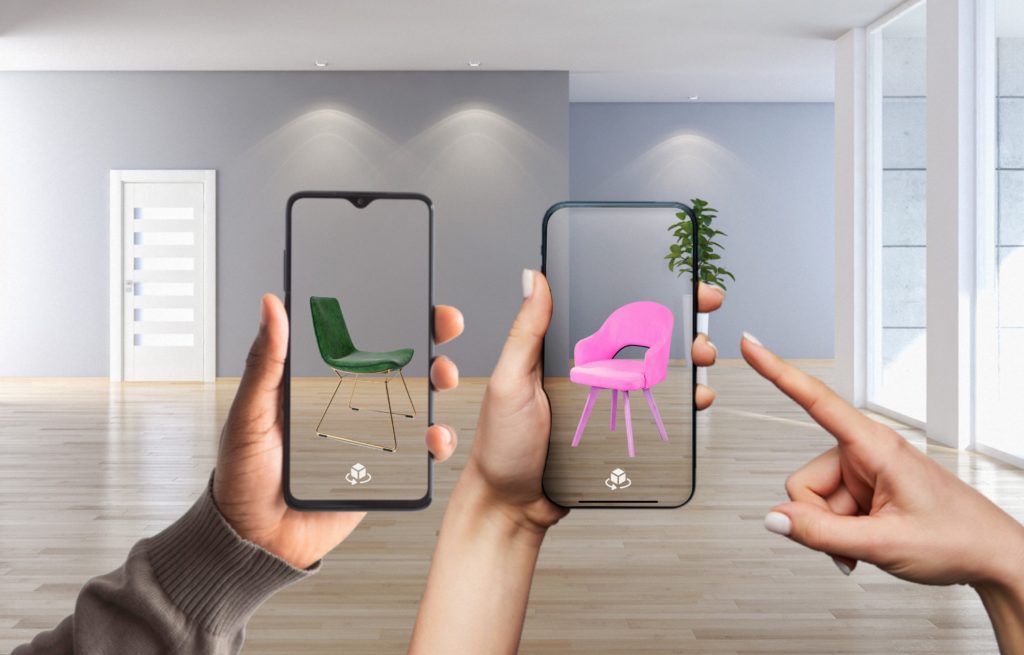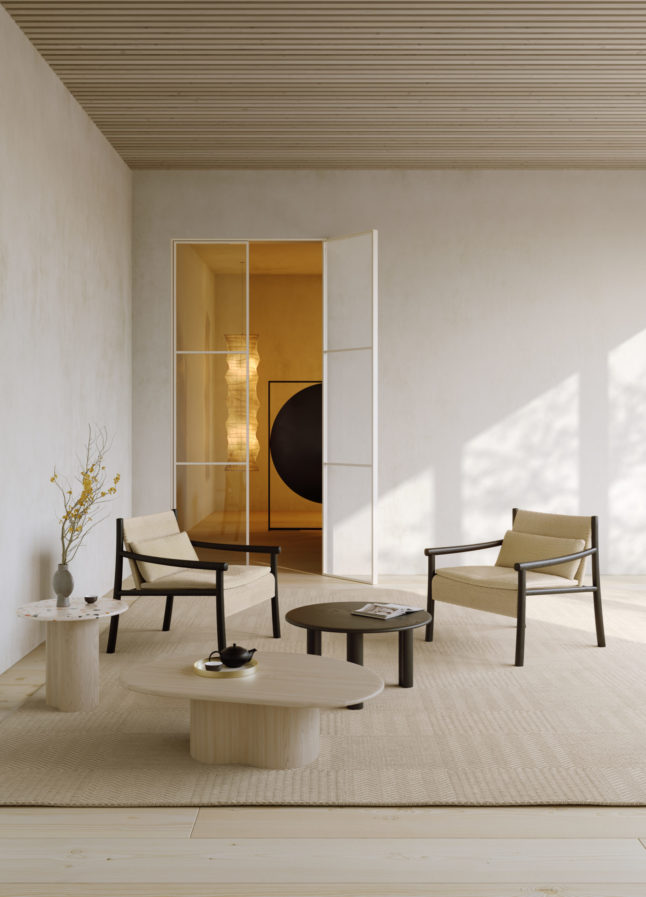lexxeagle's blog

In a world where
technology is constantly reshaping industries, furniture design is no
exception. Augmented reality furniture is a cutting-edge innovation allowing
customers to visualize how different pieces will look and fit within their
space before making a purchase. This transformative technology is changing the
way we approach interior design, making the process more interactive, precise,
and user-friendly. In this article, we’ll explore how augmented reality
furniture works, its benefits, the technologies behind it, and its growing
impact on the design world.
Augmented reality (AR)
furniture is revolutionizing the shopping experience by bringing virtual
elements into real-world spaces. This technology enables users to use a
smartphone or tablet to place virtual furniture items in their actual rooms. By
leveraging the device’s camera, augmented reality furniture overlays digital
images of couches, chairs, or tables onto the physical environment, helping
customers see how different items will look and fit.
This interactive tool
has opened a world of possibilities for both consumers and designers, offering
the ability to view furniture from all angles, adjust size, and even explore
different colors or materials. The precision it brings makes it much easier to
visualize design choices before committing to a purchase.
For both consumers and
designers, augmented reality furniture offers a range of advantages that
simplify and enhance the design process. The traditional method of imagining
how a piece of furniture might look in a space often leads to uncertainty and
hesitation. However, AR solves these issues by giving users a concrete visual
representation.
- Reduces the risk of purchasing items that
don't fit or suit the style of the room.
- Empowers consumers to experiment with
multiple design options without leaving home.
- Enhances the decision-making process by
offering a clear, real-time preview.
Designers also benefit
by using AR as a collaborative tool, allowing them to present clients with
different layout ideas instantly. By embracing augmented reality furniture,
professionals can create more dynamic and client-centered design solutions.
The development of
augmented reality furniture relies on several advanced technologies. These
innovations ensure that users can experience seamless integration of virtual
objects in their real-world spaces, making AR as accurate and lifelike as
possible.
Among the technologies
used are:
- 3D Modeling:This enables the creation of highly
detailed virtual representations of furniture, allowing for accurate
scaling and proportions.
- Mobile Device Sensors:Smartphones and tablets equipped with
cameras and motion sensors help map the physical space, ensuring virtual
furniture aligns with real-world dimensions.
- AR Software Platforms:Applications like IKEA Place or Houzz use
augmented reality to provide a user-friendly interface that allows
customers to visualize furniture in their homes.
These technologies
combine to create an intuitive and highly engaging experience, where consumers
and designers can collaborate more effectively.
As augmented
reality furniture continues to evolve, its influence on interior design is
only set to grow. With rapid advancements in AR technology, we can expect more
brands to adopt it as a staple in their customer experience offerings.
Additionally, the increasing use of AR will likely transform how professionals
approach space planning and layout design.
The potential of
augmented reality furniture lies not only in its convenience but also in its
ability to personalize the design process. From fully customized designs to
virtual home staging, the future of AR in furniture is all about empowering
users to take control of their spaces in new and exciting ways.
In the coming years,
as AR technology becomes even more sophisticated, it’s clear that augmented
reality furniture will continue to reshape the way we envision, purchase, and
interact with furniture.
Augmented reality
furniture is more than just a trend; it's a transformative force in both
consumer shopping and interior design. By merging the physical and digital
worlds, this technology offers an unparalleled level of convenience and
customization. Whether you're a homeowner looking to revamp your living room or
a designer crafting the perfect layout, augmented reality furniture brings your
vision to life with unprecedented clarity. As AR continues to evolve, it
promises to remain at the forefront of the future of design.

In the fast-paced
world of hospitality, design plays a crucial role in shaping the guest
experience. From luxurious hotels to cozy restaurants, every detail must be
carefully considered to create spaces that are not only functional but also
visually appealing. Hospitality design visualization offers a powerful tool for
designers and clients alike, allowing them to see how their ideas will come to
life long before construction begins. In this article, we’ll explore the ins
and outs of hospitality
design visualization, its importance, the tools that make it possible, and
how it’s transforming the industry.
Understanding the
Role of Hospitality Design Visualization
Hospitality design
visualization goes beyond simply making a space look attractive; it’s about
crafting an environment that aligns with the brand’s values and enhances the
customer experience. Whether you’re designing a boutique hotel or a high-end
restaurant, visualization helps to communicate ideas clearly, ensuring that all
stakeholders are on the same page.
This process involves
not only the aesthetic aspects but also the functional layout of the space.
From lighting to furniture placement, hospitality design visualization enables
designers to fine-tune every element before construction, saving time and avoiding
costly mistakes.
Key benefits of
hospitality design visualization include:
- Enhances communication between clients,
architects, and designers.
- Reduces costly changes during the
construction phase.
- Allows for creative experimentation with
design elements.
As the industry
continues to evolve, visualization has become an indispensable tool, bridging
the gap between imagination and reality.
Tools and
Technologies Behind Hospitality Design Visualization
Today’s visualization
tools are more advanced than ever, offering photorealistic renderings, 3D
modeling, and even virtual reality experiences. These technologies allow
designers to walk through a space in its early stages and make critical
adjustments based on real-time feedback.
Popular tools used
for hospitality design visualization:
- 3ds Max and V-Ray:Renowned for creating detailed 3D models
and photorealistic renders.
- SketchUp:Ideal for quick, intuitive design
iterations.
- Lumion:Often used for real-time rendering, offering immersive,
interactive experiences.
- Virtual Reality (VR):Provides an even deeper dive, allowing
clients to experience the space as if they were physically there.
Using these tools,
designers can showcase different design elements, such as color schemes,
furniture placement, and even lighting conditions, under various scenarios.
This versatility makes hospitality design visualization a powerful asset in the
early planning stages.
How Visualization
Enhances Guest Experience
A well-designed space
does more than just please the eye—it influences how guests feel and behave.
Hospitality design visualization allows designers to create environments that
evoke the desired emotional responses, whether it’s comfort, excitement, or relaxation.
Take, for example, a
hotel lobby designed using hospitality design visualization. Designers can play
with lighting to create an inviting atmosphere, adjust furniture arrangements
for a welcoming feel, and use colors that reflect the hotel’s brand identity.
By seeing these elements come together in a visual format, the design can be
refined to ensure it leaves the right impression on guests.
Ways visualization
impacts guest experience:
- Helps designers curate spaces that are
emotionally engaging.
- Ensures that the layout and design
contribute to a smooth guest flow.
- Enables the exploration of different
ambiance settings, enhancing the overall mood of the space.
Ultimately, the
purpose of hospitality design visualization is to ensure that every design
choice enhances the guest experience, from the first step into the building to
their final moments of departure.
Future Trends in
Hospitality Design Visualization
As technology
advances, so does the potential for innovation in hospitality design
visualization. We’re seeing an increase in the use of augmented reality (AR),
which allows clients to interact with design elements in real time, making it
easier to test different configurations and concepts on the fly.
Another trend is the
integration of sustainability considerations into the visualization process.
Designers can now simulate energy usage, natural light flow, and material
sustainability, giving clients a comprehensive view of how their designs align
with environmental goals.
Emerging trends in
hospitality design visualization:
- Augmented Reality (AR):Allowing clients to explore design
changes in real time.
- Sustainability Simulations:Offering insight into the environmental
impact of design choices.
- AI-Assisted Design:Using artificial intelligence to optimize
layouts and predict guest preferences.
As the demand for
personalized guest experiences grows, these innovations will become even more
critical in helping hospitality brands stand out in a competitive market.
Conclusion
Hospitality design visualization is transforming the industry by providing
designers and clients with a clearer, more interactive way to approach space
planning. From enhancing communication to shaping memorable guest experiences,
this technology is proving to be an invaluable asset in the design process. As
tools continue to evolve, the future of hospitality design visualization looks
brighter than ever, opening the door to even more innovative and guest-centric
designs.
